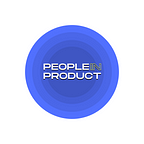Product Manager vs Engineering Manager— Ojimaojo Udale-Ameh
Ojimaojo Udale-Ameh is a brilliant Software Engineer curious about Products, Distribution, and Ecosystems. He is currently doing amazing stuff at PiggyVest, as their Engineering Manager.
What are the collaborative ways a PM and EM can work together to deal with mistrust and communication issues from their Engineering team?
Largely, mistrust and communication issues arise because the role of the PM and the EM overlap and may have different goals and priorities from time to time. The PM wants to have total control of the roadmap and the EM wants to prioritize resources to several things that may be invisible to the PM at the time but PMs may see it as swaying from the roadmap they have. But proper communication, alignment, and syncing can help
The PM and EM roles can sometimes be differentiated only by a thin line, in many cases/companies, how do you manage to distinctly separate both roles for optimal output?
So for me, I have to separate both mentally as I largely take on both. I work closely with the VP Product strategy on my team to align on strategy and then move on the manage the tasks, roadmap and then move to the Engineering bit to bring all of it to life. Largely, I believe the Product Manager should have the roadmap, overall goals and work with the Engineering Manager to get a breakdown of what Engineering needs, look at what the Engineering team is prioritizing, and how to bring the current deliverables needed for the milestone to life.
As an EM, how do you communicate alternative approaches to your PM or in your case the VP Product strategy, seeing that she may have made decisions already, backed by data/user research, etc.?
So we both work with data to make decisions and communicate a lot and try to see things from each other's perspectives. As much as we try to make decisions from data, data itself can be bias based on a lot of contexts unknown to the data collector. E.g If we ran a campaign and we got 2x signups but think it was because of the campaign, unknown to us a popular Youtuber who has 10m views spoke about the app or product on their channel but we had no idea about it, we may assume that campaign was awesome and then look to repeat it but we didn’t have all that information and that can be a problem.
So long and short, we communicate a lot, speak to users and look at the data (with as much context as possible) while making decisions
What are the steps you take to agree on timelines with your VP Product strategy, either for a new feature request or any kind of request?
We look at the time it takes technically, how pressing the need is (to determine if we may need to look for ways to shorten that time or not) and how serious it is (to determine if we need to drop what we are working on to focus on that now), and a lot more factors.
How do you create a “product planning and development” environment for success as an EM in your company?
Honestly, this involves a lot of iterations. I think I’ll speak more as a PM/EM here.
I leave the floor open to every member to contribute at every point in time when we are making a product decision and spell out why we are making it so no one is working blindly. We also spend a lot of our time building in-house frameworks to help us ship features fast so when we come up with product ideas, we can quickly ship and test them out with a set of users and get feedback fast.
After the discussion session, we had questions from the members of the community, here are some of them.
What tools do you use for planning and collaboration with your VP product strategy? For non-technical PMs, what do you recommend we do in our efforts to understand our EMs and their prioritization techniques better?
We currently use Basecamp but we have tried a lot of tools. Basecamp just works!
I’ll advise you to get a high-level knowledge of things like Technical debt, etc, and how EMs prioritize and also quickly look up the reasons they give when they say No to certain things or try to explain delays in shipping certain things.
What steps can one take to develop a good EM/PM relationship for people who work directly or closely with them? Say as a Product Designer on the team
Deliver, contribute and communicate.
What are the necessary steps one must take if one is interested in becoming an EM?
Have extensive knowledge of how systems work, architecture, teams, managing people, and deliverables. Also experience working on teams and understanding business demands as much as engineering experience.
